Using Buyer Psychology to Boost Human's Subscription Sales by an additional 31.26%
Dietary Supplement Case Study: The Psychology of Multi-Step Decissions
Executive Summary
Following the success of the Buying Forces Framework Human N test, Creative Thirst implemented a second A/B test leveraging the psychological principle of Commitment & Consistency. By breaking the purchase process into two distinct steps and securing small commitments before asking for the larger subscription commitment, the test achieved an additional 31.26% increase in subscription sales. This case study examines how adding friction and re-structuring the decision-making process led to significantly improved conversion rates and substantial additional revenue.
The Challenge: Background Context
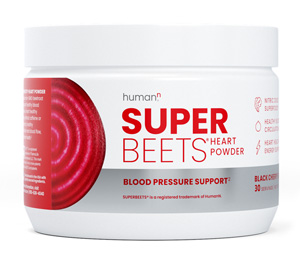 Human N, a leading Inc. 5,000 nutritional supplement brand with over $65M in annual revenue, had already successfully implemented a first test by Creative Thirst using the Buying Forces Framework that increased subscription sales by 23.53%. Building on this success, Creative Thirst proposed a second test to further optimize the conversion path.
Human N, a leading Inc. 5,000 nutritional supplement brand with over $65M in annual revenue, had already successfully implemented a first test by Creative Thirst using the Buying Forces Framework that increased subscription sales by 23.53%. Building on this success, Creative Thirst proposed a second test to further optimize the conversion path.
The SuperBeets product already had high-quality traffic from TV advertisements, and the content from the first test effectively educated visitors about the importance of nitric oxide and daily supplementation. The next challenge was to structure the purchasing decision in a way that would maximize subscription sales on top of the gains in the previous test.
The Approach: Commitment & Consistency Principle
For this test, Creative Thirst leveraged the well-established psychological principle of Commitment & Consistency. This is a well documented psychological frame, popularized by Dr. Robert Cialdini in his book "Influence." This principle states that people have a strong desire to be consistent with what they've already committed to, even if the initial commitment was small.
The key insight: By breaking up the buying process into two distinct steps and securing a small commitment first, users would be more likely to follow through with a larger commitment (subscribing) to maintain consistency with their initial decision.
This approach is particularly effective for subscription offers, which represent a larger psychological commitment than one-time purchases.
The Test Implementation: Treatments 1 & 2
Creative Thirst designed a test with two different treatment approaches, both using the Commitment & Consistency principle but with different initial commitment focus. The image below shows treatment 1 on the left and treatment 2 on the right. Both were tested against the control.
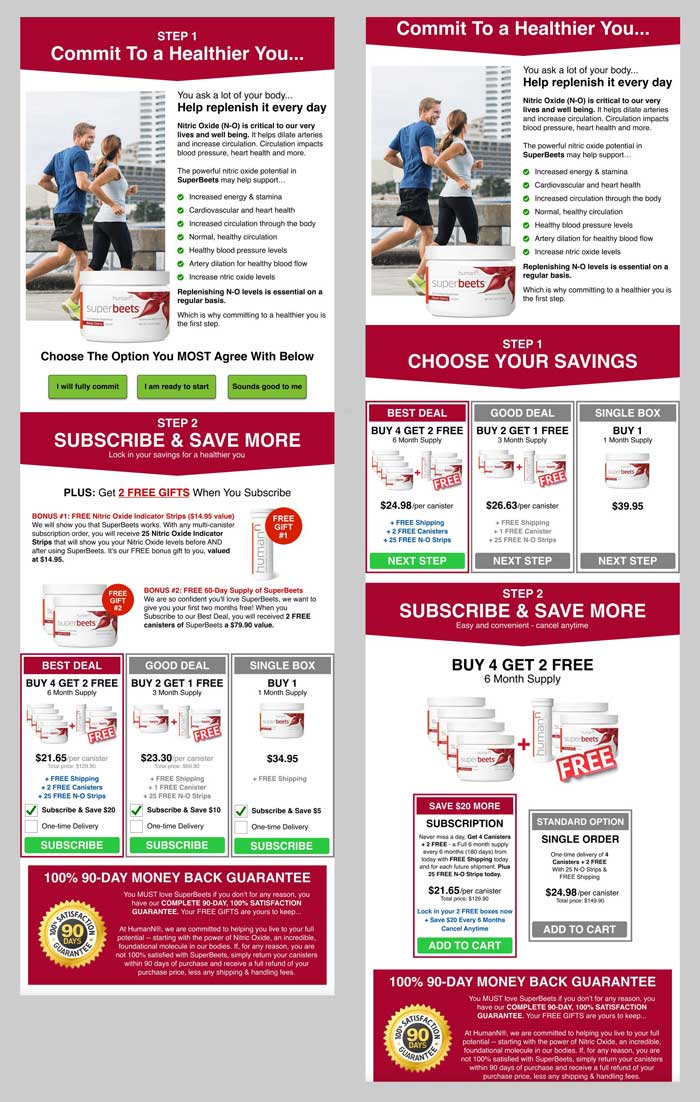
Treatment 1: Health Commitment First
Step 1: Ask for a commitment to health before showing the offers.
Step 2: Present the offer options with the subscription pre-selected. And the best deal is visually weighted. And pre-framed towards subscription above the offer selection section.
Treatment 2: Package Selection Commitment First
Step 1: Ask for a commitment to a specific package. (with no one-time or subscription options.)
Step 2: Present subscription vs. one-time order option with the subscription option pre-selected and visually weighted. And equally pre-framed towards subscription above the offer selection section.
Treatment 1: Health Commitment First
Step 1: Commitment Step
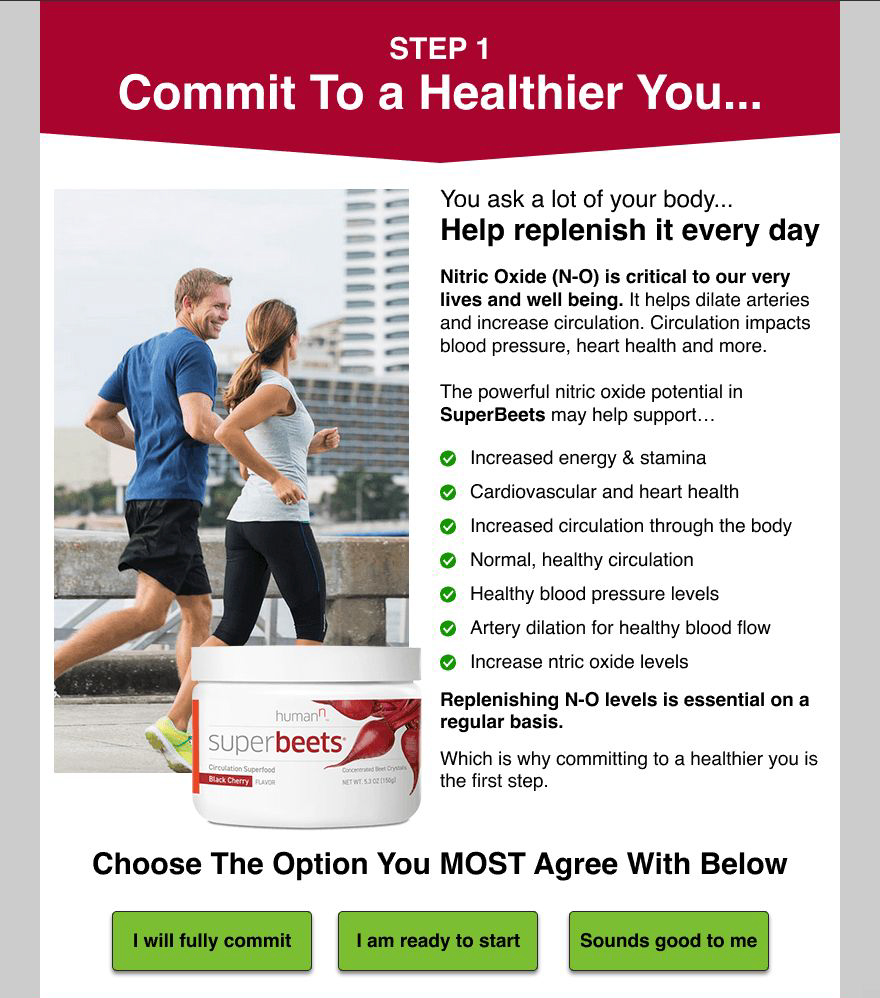
This step featured:
- Educational content about nitric oxide benefits.
- Explanation of why daily replenishment is essential using our buying forces framework.
- A clear call-to-action asking users to choose an option they "MOST Agree With."
- Three commitment levels: full commitment, ready to start, or sounds good.
Step 2: Offer Selection

After making the health commitment, visitors were shown:
- Subscription packages with the most valuable option highlighted.
- Pre-selected subscription options (maintaining consistency with health commitment).
- Price anchoring with the highest price option shown first.
- Free bonus gifts for subscribing to increase perceived value.
- Subscription benefits are clearly outlined.
Treatment 2: Package Selection Commitment First
Step 1: Commitment Step With Offer Selection Presentation
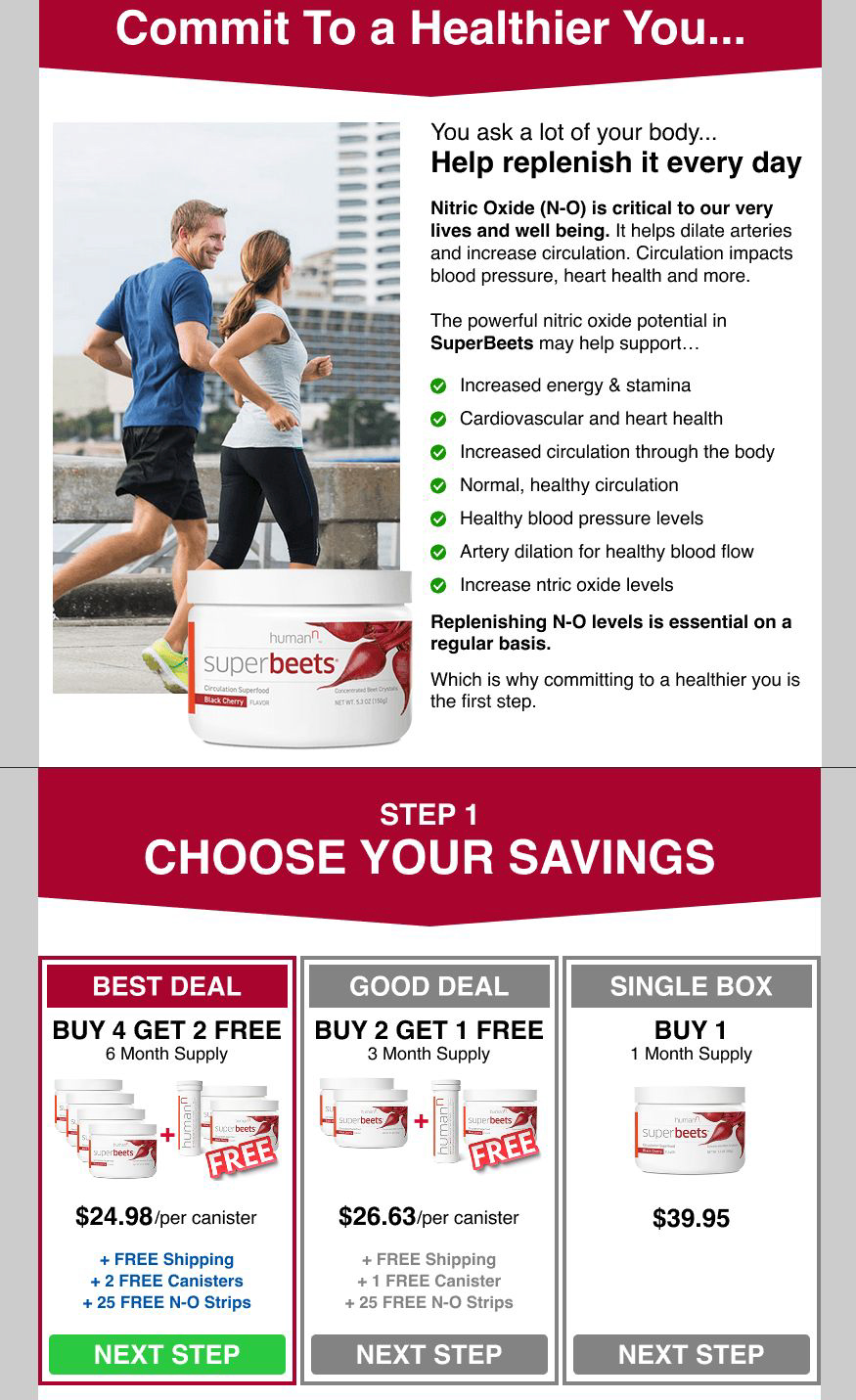
This step featured:
- The same educational content about nitric oxide benefits.
- Immediate package selection options (Best Deal, Good Deal, Single Box).
- Clear supply duration information for each package.
- Higher-value options are highlighted with "Best Deal" labeling.
- "Next Step" buttons rather than immediate purchase buttons.
Step 2: Offer Details
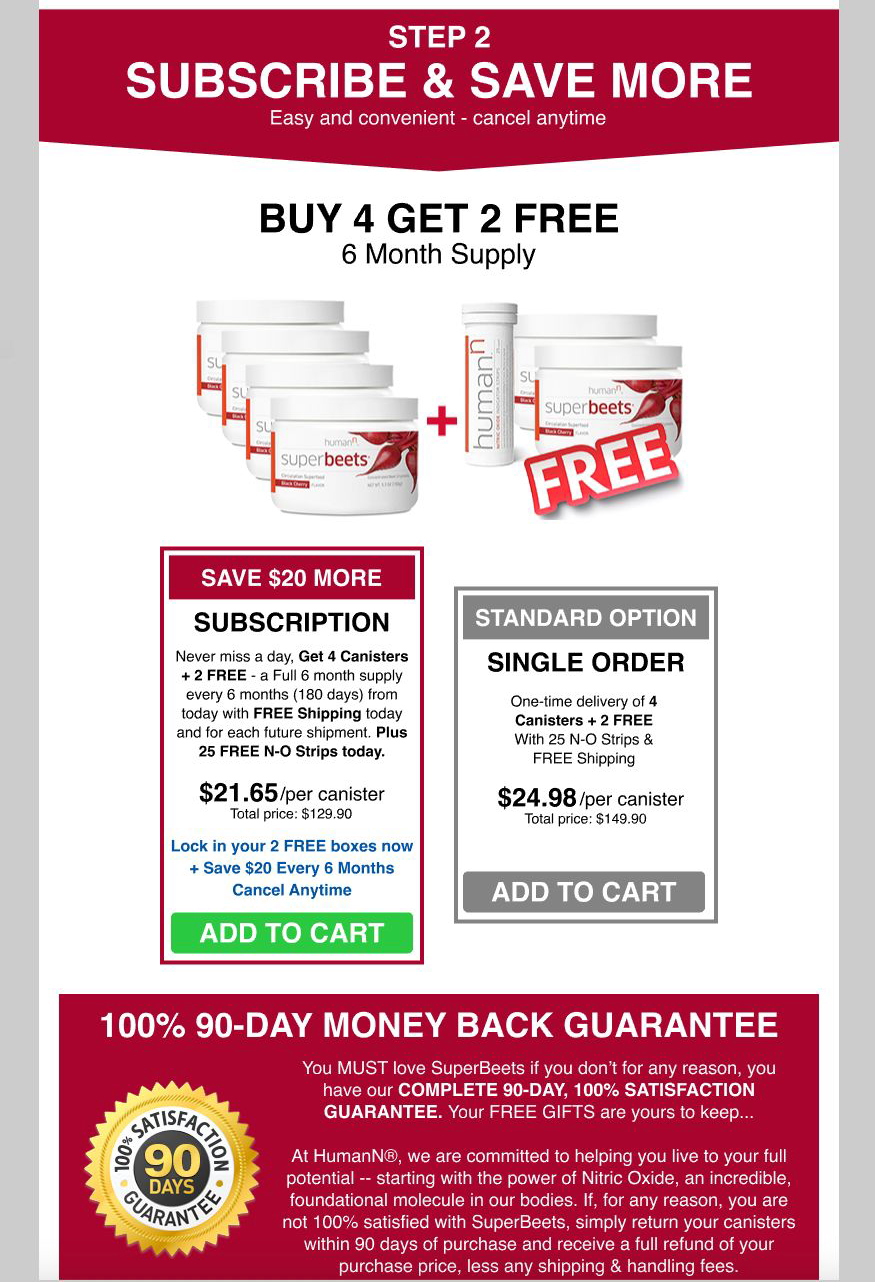
After committing to a package, visitors were shown:
- Subscription vs. one-time purchase options for their selected package.
- Subscription option pre-selected and highlighted ("Save $20 More").
- Additional savings are emphasized for the subscription option.
- Reassurance about subscription flexibility ("Cancel Anytime").
- Clear call-to-action buttons.
Results
Additional Increase in Subscription Sales
31.26%
The test yielded an additional 31.26% increase in subscription sales beyond the gains already achieved in the first test.
Did you guess which treatment won?
In the end, it was treatment 2 that won. The commitment step with the offer presentation. Keep reading to understand why.
Were you right or wrong?
Did the results surprise you?
The gains in this test were significant and clearly demonstrated the effectiveness of the Commitment & Consistency principle in driving subscription selection.
Analysis: Why It Worked
Small Commitments Lead to Larger Ones
By securing a small initial commitment (either to health or to a specific package), visitors became psychologically invested in the process. This made them more likely to maintain consistency by following through with the subscription option.
Pre-Selected Options Leverage Default Bias
Having the subscription option pre-selected leveraged the power of defaults - people tend to go with pre-selected options when they've already made a commitment to the process. This subtle nudge significantly influenced decision-making.
Breaking Down the Decision Process
By separating the decision into two distinct steps, the process became less overwhelming. Instead of asking visitors to make multiple decisions at once (package size, subscription vs. one-time, etc.), each decision was isolated, making conversion more likely. It's rare that adding friction (by increasing the number of steps in this case) increases conversion. Unless you understand the buying psychology behind the reason to add more friction.
Price Anchoring
Starting with the higher-priced option first (anchoring) made the subscription prices seem more reasonable by comparison. Combined with the highlighted savings for subscriptions, this created a compelling value proposition. This was a win on past testing that Creative Thirst validated across multiple supplement clients and several tests. Therefore, we deemed it appropriate to create a variable cluster test to get the biggest gain in the shortest amount of time possible.
Business Impact
- Additional Revenue: The second test added another layer of revenue improvement, generating over $77,000 in additional revenue.
- Improved Customer Lifetime Value: Subscription buyers are the holy grail of a back-end business like supplements. Typically representing significantly more value than one-time purchasers over time.
- Optimization of Marketing Spend: The same ad traffic is now converting at a much higher rate, resulting in improved conversion and AOV, resulting in lower cost of acquisition.
Key Takeaways
- Breaking purchasing decisions into multiple steps increases conversion rates for high-commitment options like subscriptions when buyer psychology is leveraged. it's not just about a multi-step process or adding more friction for friction's sake.
- Securing a small commitment first makes users more likely to follow through with larger commitments.
- Pre-selecting the subscription option after an initial commitment leverages the consistency principle effectively.
- Different types of initial commitments (health-focused vs. package-focused) can both be effective in driving subscription conversion.
- The psychological principles of commitment and consistency are powerful tools for optimizing conversion paths for supplement offers.
About Creative Thirst
Creative Thirst helps dietary supplement, e-commerce companies maximize profitability. We take a revenue-focused optimization approach, not just getting more front-end sales or opt-ins, but looking at the entire sales funnel, including back-end sales, retention, and lifetime value.
It's less about tactics or technology, and more about enabling our clients to connect with their audience and grow their businesses.
Some Supplement Brands We've Helped Grow















Check out Case Study #1 to learn how we used the Buying Forces Framework to achieve a 23.53% increase in subscription sales!
View Case Study #1